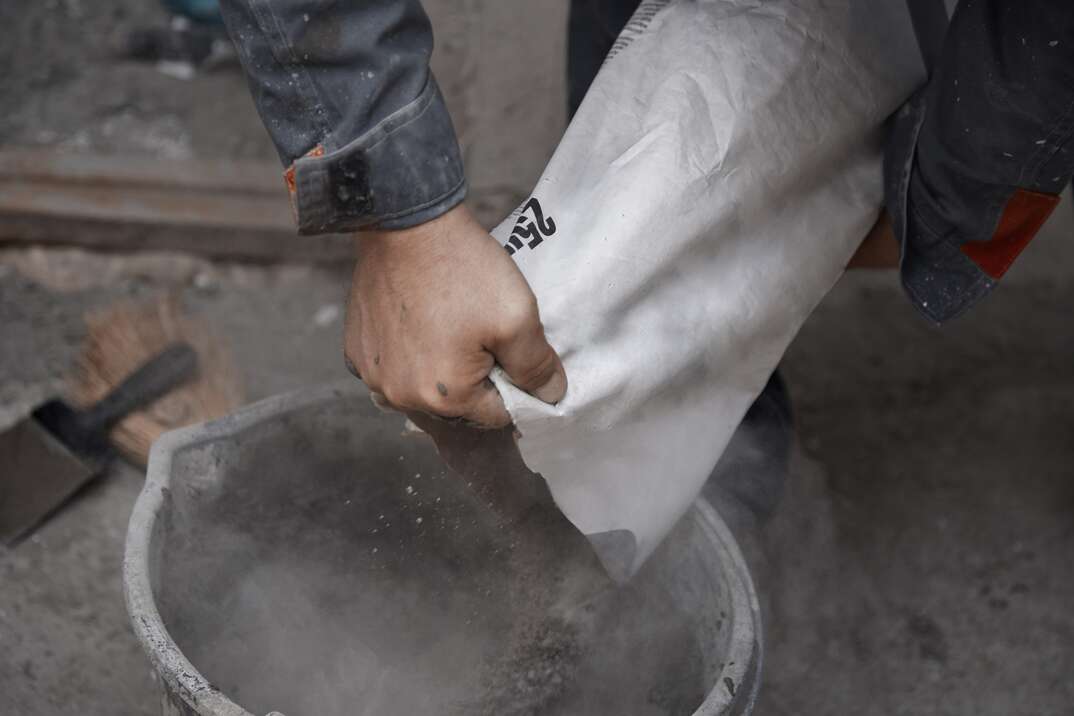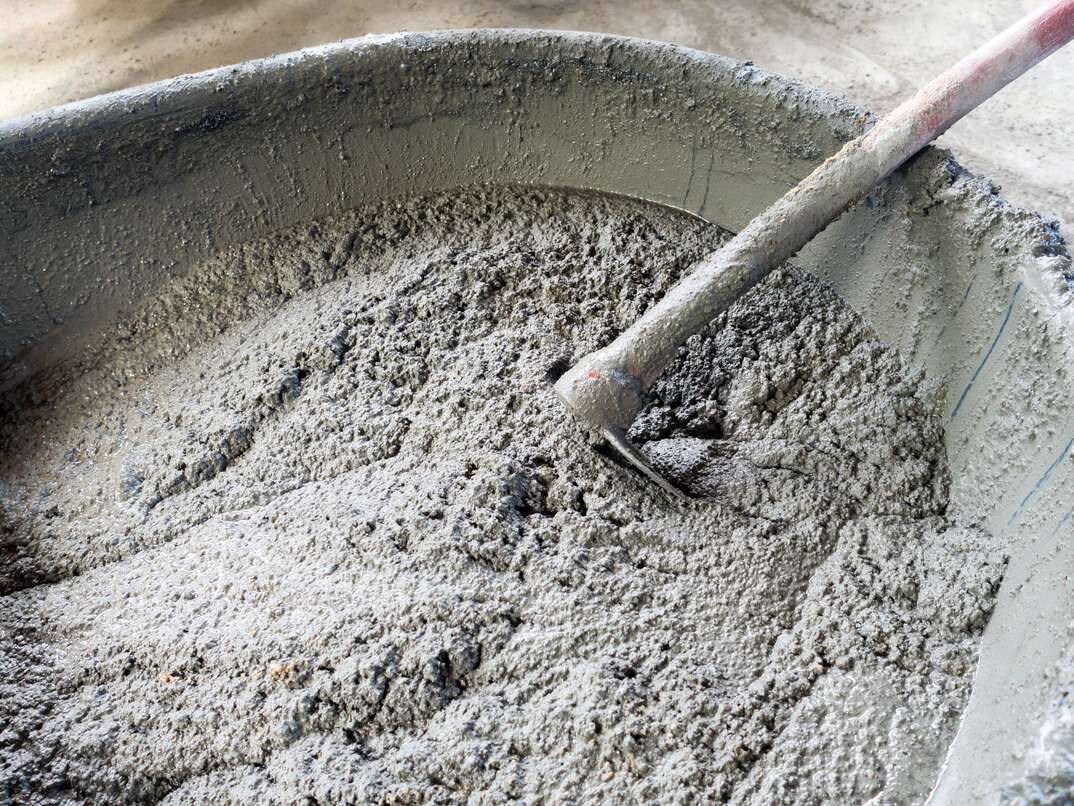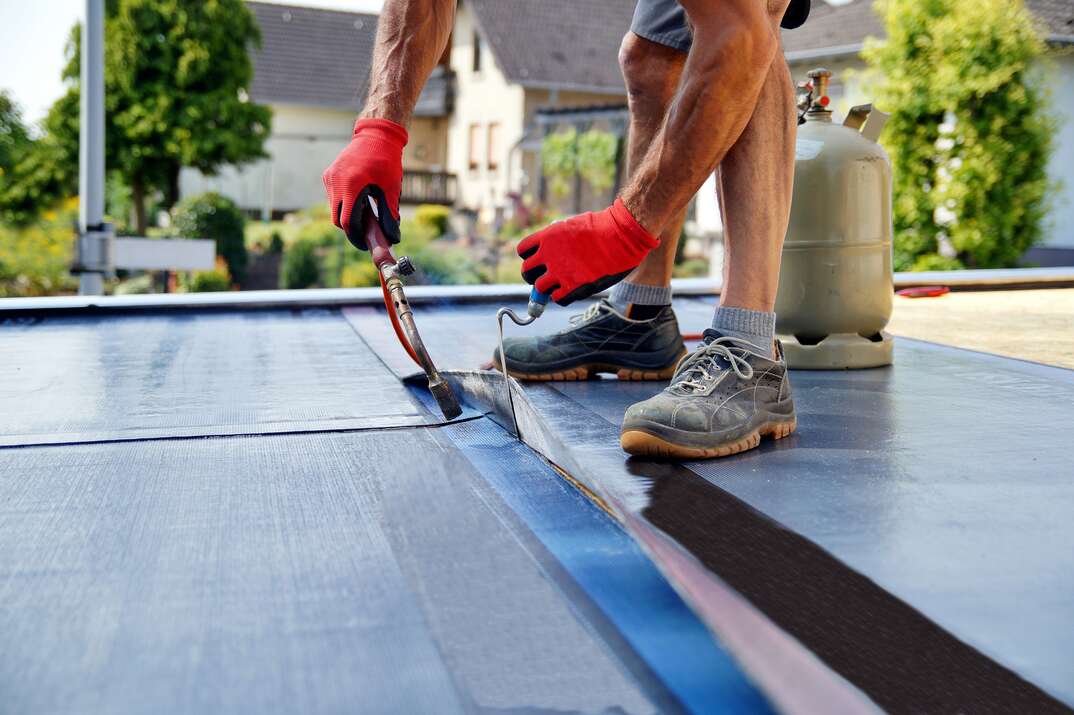Ready? Set. Here's How to Prepare and Use Ready-Mix Concrete

Of all building substances, concrete is something of a hero. Not only can it form a sturdy base for fence, deck and mailbox posts, it can also be used to create full surfaces like outdoor patios that will hold up for years. It's cheap, tough and versatile, and it can even be stamped in different patterns or tinted in a variety of colors, making it attractive for design purposes as well.
This May Also Interest You: How to Pour a Concrete Sidewalk
Adding to the allure of concrete is the fact that it's also a relatively easy product for even beginner DIYers to work with — especially when the concrete in question is the ready-mix style. Here, we'll go through some of the basics of this wonder material and give you what you need to know to use it in any project you set your mind to.
What Is Ready-Mix Concrete?
There are two types of ready-mix concrete. If you've ever seen one of those cement trucks with the large, rotating, vase-like barrel on the back, then you've seen one type: industrial use. This type of ready-mix consists of a specific blend of ingredients that is specially formulated for the demands of individual job sites. The ingredients are mixed together in the truck, and the concrete arrives ready to use at the job site.
The other type of ready-mix concrete — the one we'll concern ourselves with here — is the kind that you can get at home improvement stores. It typically comes in 40- or 80-pound bags, often under the brand name Quikrete. Just like all concrete, Quikrete is a mix of cement and aggregate, such as gravel or sand. But Quikrete is specially designed to cure quickly, and it takes the guesswork out of trying to measure different ingredients. All you need to do is add water and then use the product as you need it.
Advantages of Ready-Mix Concrete
As mentioned, ready-mix concrete cures (or dries) quickly. Quikrete, in fact, can be ready in about 20 minutes, although 40 minutes is a more typical curing time. Using a ready-mix product ensures that your concrete is uniform throughout your product and because the mixing is done by professionals, you know that the ratio of ingredients will be safe and long-lasting — not to mention the fact that you'll save time not having to buy, measure and mix individual ingredients.
Beyond those advantages, ready-mix concrete is one of the most durable construction materials. It’s resistant against fire, strong winds, adverse weather conditions, termites and even explosions. So, thanks to its durability, it can repay you over the years by not needing to be replaced or heavily maintained.
How to Prepare Ready-Mix Concrete
If you're using your concrete as a base for posts, simply dig your holes deep enough to begin. Otherwise, if you are making a patio, stairs or other structure, you'll want to build a frame in which to pour the ready-mix.
Once you've done so, you can calculate its volume by multiplying its length, width and depth. This will tell you the volume of concrete that you need to fill the space. Next, divide the volume (in cubic feet, meters, etc.) by the concrete yield of the material you are using for your project. That is the volume of freshly mixed concrete you can make per bag. For instance, your 80-pound bag of ready-mix concrete yields 0.6 cubic feet of concrete. If your project requires 5 cubic feet of concrete, then you will need nine 80-pound bags.
Be sure to choose the right ready-mix concrete for your project. Options are available for many applications, including quick setting, extra strong, fiber-reinforced, architectural and decorative.
Caution! Wet ready-mix concrete is corrosive and highly alkaline. Avoid getting it on your skin by wearing long sleeves, waterproof clothing, gloves and safety boots. A dust mask and safety goggles will protect your eyes and airways from fine concrete dust.
More Related Articles:
- How to Stamp Concrete: Your 6-Step Stampin’ Guide
- Cement Your Style With a Polished Concrete Floor
- Concrete Countertops: you’ll Never Take ‘Em for Granite
- The Hard Numbers on Polished Concrete Floor Costs
- How Much Does a Concrete Driveway Cost?
How to Mix the Concrete
If you have a large volume to work with, you can hire a cement mixer to get your concrete mixed. Otherwise, it is more economical (and a lot simpler) to do it by hand. Thanks to the simplicity of ready-mix, all you need is water, a mixing container and a shovel or hoe. The easiest way to mix the concrete is in a wheelbarrow. Not only does it give you a large open space in which to make the mix, but after getting it ready, you can simply transport it to the job site and pour out the concrete for your project.
To get it ready, open your bag of ready-mix concrete and put it in the wheelbarrow or mixing container. Make a small crater in the center of the dry material and add water gradually. Each 80-pound bag of dry mix needs one gallon of water. Pour three-quarters of the water into the crater and fold in the dry concrete with the shovel. Paddle the shovel through the mix just like canoeing while adding the rest of the water. Continue paddling and mixing until the mixture is thoroughly wet.
To know if the concrete is of the right consistency, squeeze some with a gloved hand. If it won’t keep form but stays put in your hand, it’s just right. If it forms a ball and holds its shape, the concrete is too dry. And if it runs through your hands, the concrete contains too much water. Soupy concrete tends to crack during drying, which will weaken the finished product. The strongest concrete consistency is somewhere between dry and runny.
Pouring and Finishing
After the concrete achieves the right consistency, you can pour it into the frame of your project. If you're filling a frame, spread and smooth the surface of the wet concrete with the shovel. Next, cover it with a polyethylene sheet to keep it clean from leaves, mud and other debris. Cordon off the area to prevent people and animals from stepping on the concrete and ruining your project. Then let the concrete cure and continue to gain strength. Your ready-set will start to harden in about half an hour.
It is good practice to promptly clean and put away your equipment, so scrub the wheelbarrow and the tools with a stiff-bristle brush before the concrete hardens.



